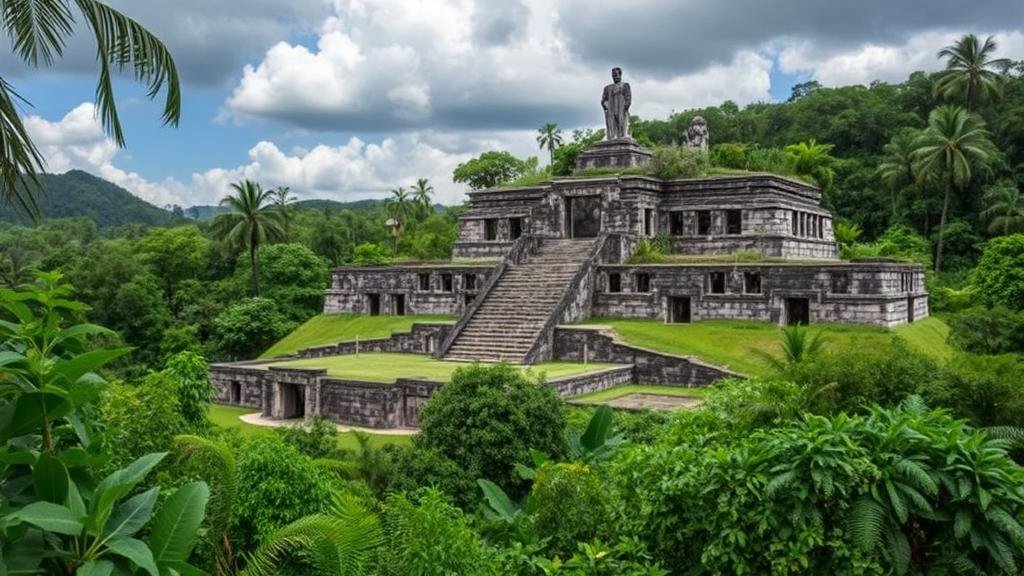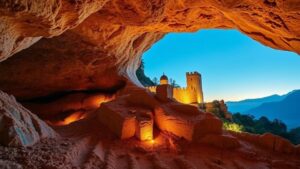Searching for remnants of the Olmec civilization’s early cities hidden in Central American jungles.
Searching for Remnants of the Olmec Civilization’s Early Cities Hidden in Central American Jungles
The Olmec civilization, often referred to as the mother culture of Mesoamerica, thrived in the verdant regions of Central America around 1200 to 400 BCE. Renowned for their colossal stone heads and intricate jade carvings, the Olmecs left behind cryptic remnants of their urban areas, hidden under the dense jungles of Mexico and Central America. This article explores ongoing archaeological efforts to unearth these ancient cities, their significance, and the challenges posed by modern-day conservation efforts.
The Significance of Olmec Civilization
Regarded as one of Mesoamerica’s earliest complex societies, the Olmec civilization laid the groundwork for subsequent cultures such as the Maya and Aztec. developed sophisticated social structures, established trade networks, and innovated in art and architecture. Their cities, notably San Lorenzo and La Venta, featured monumental structures that reflect religious and cultural advancements.
Key Locations of Olmec Urban Centers
Two of the most important Olmec sites are:
- San Lorenzo: Established around 1200 BCE in Veracruz, it is known for its massive earthen mounds and intricate drainage systems.
- La Venta: This site flourished from 900 BCE and is famous for its ceremonial complexes and large stone monument carvings.
Archaeologists believe that these sites are just the tip of the iceberg, as many others are still buried beneath thick foliage and soil.
Recent Discoveries and Technological Advancements
The advent of advanced imaging technology, including LiDAR (Light Detection and Ranging), has revolutionized archaeological exploration in dense forests. In recent years, LiDAR has uncovered significant evidence of Olmec urban layouts and agricultural systems that were previously obscured by vegetation. For example, a team of researchers from the National Autonomous University of Mexico (UNAM) utilized LiDAR in the Olmec heartland, revealing vast networks of causeways, dwellings, and ceremonial structures, suggesting that these cities were more extensive than previously realized.
The Role of Community and Collaboration
Efforts to uncover Olmec cities also involve local communities. Archaeologists are engaging indigenous groups who have invaluable knowledge of the local landscape and history. Through workshops and participatory fieldwork, they not only help guide research but also foster a sense of ownership and stewardship among the local populace.
Challenges of Archaeological Exploration
Uncovering the remnants of Olmec cities presents numerous challenges:
- Environmental Factors: The tropical climate accelerates the deterioration of artifacts, creating an urgency to preserve findings.
- Illegal Excavation: Profit-driven excavation activities often lead to the destruction of archaeological sites.
- Funding and Resources: Archaeological projects require substantial financial backing, often limiting the scope of explorations.
Addressing these challenges is crucial for the preservation of Olmec heritage and ensuring that future generations can appreciate this ancient culture.
The Importance of Preservation
Preserving Olmec sites goes beyond maintaining historical integrity; it connects us with human achievements and cultural evolution. Olmec civilization contributed considerably to agricultural practices, trade, and artistic expression in Mesoamerica. By protecting and studying these remnants, we not only honor their legacy but also gain insights into the development of complex societies.
Actionable Takeaways
The pursuit of uncovering the Olmec civilization’s buried cities is not just an archaeological endeavor; it’s a commitment to understanding our past. Here are a few actionable takeaways:
- Support Local Initiatives: Engage with or contribute to organizations that promote the preservation of cultural heritage.
- Stay Informed: Follow ongoing archaeological discoveries and participate in discussions about heritage management.
- Advocate for Sustainable Practices: Encourage responsible tourism and ethical excavation practices in historically rich areas.
As we continue to search for and study the remnants of the Olmec civilization, we must remember that each artifact and structure holds a story waiting to be unveiled–one that connects us all across time and geography.



